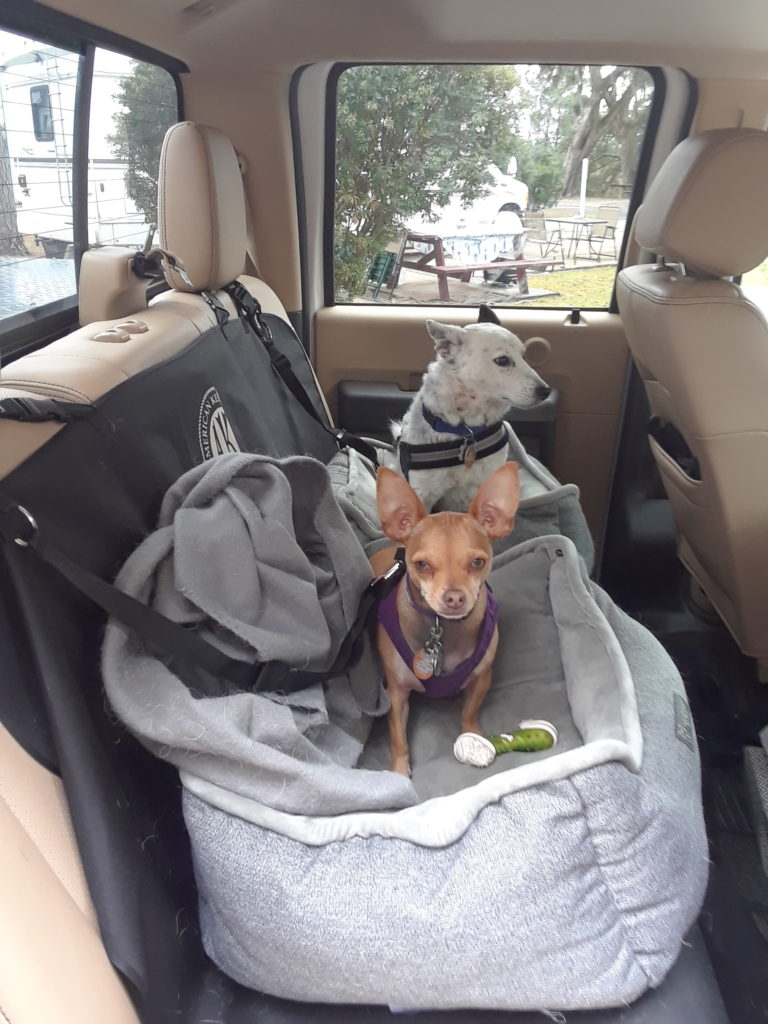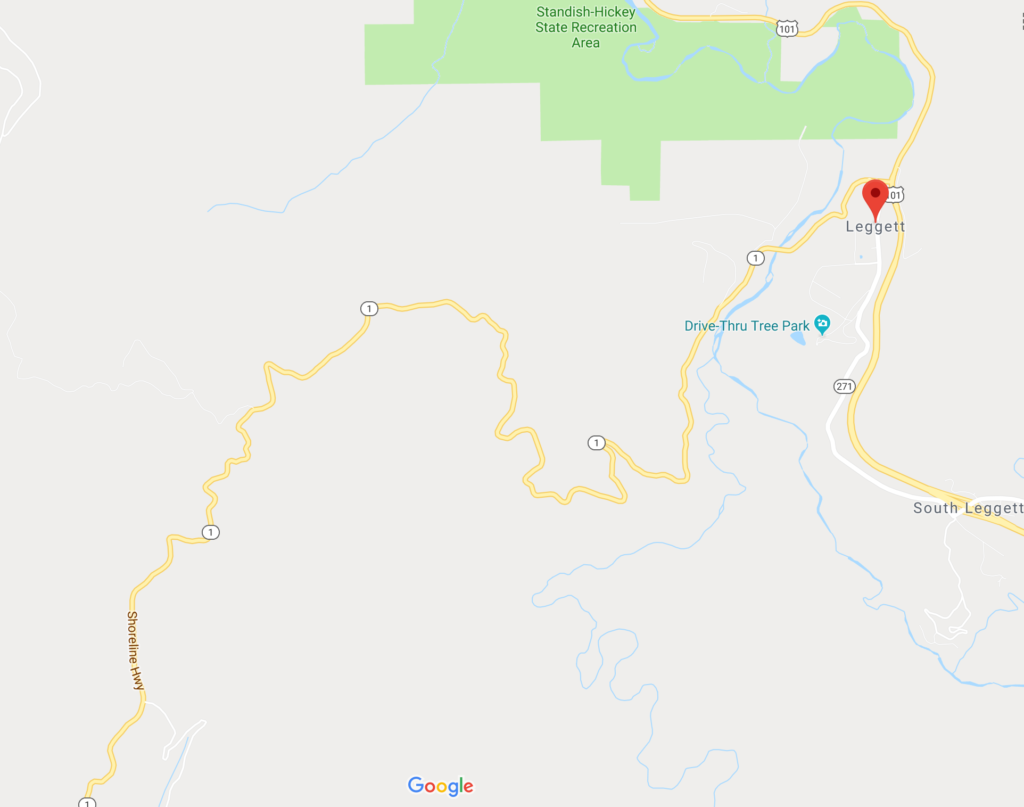I’ve always enjoyed smaller faster cars, blasting up long hills, choosing a line on a winding road, U-turns anywhere, parking with impunity, and the sheer tactile fun of a 6-speed manual transmission.
When we ordered the fifth-wheel in early 2018 with plans to hit the road in early summer, it was time to set our little rocket-cars free, and get us a big draft horse.
The requirements made this easy. We had to tow around 16,000 lbs (7250 kg). A single rear wheel (SRW) truck could tow up to 16,000 lbs, but we didn’t want to be maxed out on capacity and stability right at the start, so finding a dual rear wheel (DRW or dually) truck was the obvious choice, enabling the same model truck to tow 50% more. No-brainer here.
Next decision: a long bed means a longer wheel base, lessening the risk of tight turns causing jack-knifing and possible contact between the truck cabin and the trailer’s nose.
As for the engine, when thinking about towing, it is diesel all the way. Although noisier than gasoline, modern diesels are clean and quiet, and the longer they run, the smoother they get. Again, no-brainer here.
Two doors or four doors? Standard cab or crew cab? It is indeed just the two of us, Kellyn and I, but we’ve also got the two dogs: DaVinci the Jack Russell terrier and Esme the Chihuahua. Here is something in which we indulged: the dogs could easily have been happy in jump-seats in a standard cab, but we wanted that crew cab. Just because. I mean, hey why not?

Taken altogether, with all these requirements, finding a late-model Ford F350 turbo-diesel DRW long-bed crew cab really wasn’t difficult. It took less than a week.
And I have to say, I really LOVE THIS TRUCK. I loved my fast little cars, but this truck has an awesome personality: powerful, confident, hard-working, and low-key. Interestingly, it is a guy magnet, sometimes when I’m driving, but especially when Kellyn is driving. I’ve seen men stare appreciatively at the truck, nod, and say, “sweet ride” as I got out. That’s cool. But Kellyn seems to experience this almost every time she’s behind the wheel, most often when getting fuel. Something about a petite goth woman jumping down from that big ol’ truck seems to stimulate admiration — go figure?

Anyway, adding it all up, the F350 is 22 ft (6.7 m) in length, the fifth-wheel is 42 ft (12.8 m) in length, and at the rear of the fifth-wheel, we’ve mounted a bicycle rack with a cargo tray underneath, adding another 4 ft (1.2 m) to the length. Since the front of the fifth-wheel overhangs the rear of the F350, then altogether the rig stretches 64 ft (19.5 m) in total length.
As for height, when hooked to the truck, I estimate that the tops of the air-conditioners on the roof of the fifth-wheel are at least 13 ft 6 in (4.1 m), but that is just an estimate based on the published specs. Even tire inflation can play a role here, varying the height by several inches.
So let’s just say that I’m really unwilling to drive under anything lower than 14 ft (4.25 m). We’ve done it inadvertently, in Benson AZ, but I was jumpier that a long-tailed cat in a room full of rocking chairs. These are the moments when I realize we are dragging an 8-ton soap bubble.
Finally, in order to register it in Colorado originally, I was required to weigh the F350; it came to 8,950 lbs (4060 kg). According to specs, the fifth-wheel is 12,700 lbs (5760 kg) empty and just under 16,000 lbs (7257 kg) fully loaded.
So, altogether our rig is 64 ft long, 14 ft high, and weighs about 25,000 lbs (19.5 m long, 4.25 m high, and 11,340 kg). In comparison, an eighteen-wheeler without a sleeper cab is 70-75 ft long, 14 ft high, and over 26,000 lbs, while adding a sleep cab to the back of the tractor can add 5-10 ft. Simply put, this rig is big.

Anyway, here is what really surprised me…
We learned quickly is that this rig cannot drive on just any road. And we also learned about a second later that Google Maps has no idea how long, high, or heavy the damned thing is.
In short, Google Maps has tried to kill us.
Not on purpose, of course. It is designed with standard cars and small trucks in mind. But when Google Maps is choosing a route, it takes no notice of low clearance bridges, trees, overhead wires. Google Maps has no concept of bridges that can only bear 3-4 tons or less. It just wasn’t designed to create routes for extremely large vehicles.
Hey, I’m not trying to complain over much. I grew up in the generation of a glove compartment full of paper maps, none of which was ever refolded the same way it started. I recall being on a business trip in the mid-1990s, in a rental car, late for my return flight, trying to locate the airport by scanning the sky and watching which direction descending planes were heading. I made my flight, by the way. So GPS apps are indeed a miracle that I cherish and appreciate, but it is eerie how quickly one grows dependent on them. And how betrayed one feels when they leave one in a dangerous situation.
So I researched mapping applications for truckers and eventually chose SmartTruck Route II. Licensing is nominal, $14.95/month or $58.00/year, and to my mind, worth every penny. I bought month-to-month for the first two months until I was sure, and then I licensed it for a year. It took a little fiddling to get the settings right…
In the app setup, initially I put in exact figures for the rig (listed above), and still found some bad decisions being made by the app. So, next trip, I just went full-blown eighteen-wheeler in the app setup, making myself look like a full-size tractor-trailer, and now the app has been showing good careful decisions. We still like to cross-check against Google Maps occasionally, so the jury is still considering, but it is looking alright.
I do expect SmartTruck Route II to help me avoid low overpasses and bridges that cannot bear the weight, and I hope it can help me avoid low-hanging wires, which give me nightmares. But I cannot expect an app to help me avoid low-hanging tree boughs. For those, we just have to be watchful.
I still have nightmares. A hot day with electric wires less than 13 ft from the ground. An old railroad overpass whose warning sign says 14’0″, but where a recent road resurfacing added 6″ of height to the road within.
Then, there was Saturday 17-November 2018, a day on which I failed to make a turn recommended by SmartTruck Route II near Leggett California, and we mistakenly started down the Pacific Coast Highway, Highway 1…

Two lane road through a forest. Hairpin turn after hairpin turn. Sequoia trees crowding the roadside. Cliffs on one side, drop-offs on the other. I spent most of that drive trying to watch for on-coming traffic while also watching the mirrors to make sure that the wheels of the fifth-wheel stayed on pavement.
Eventually, we reached the shoreline and things became beautiful, but there were still ungodly hairpin turns popping up out of nowhere, such as this nutty situation just south of the town of Elk, CA..

Coming from the north (top of photo), those two hairpins each had 15% climbing inclines with 180-degree course reversals.
HERE is a time-lapse video that Kellyn managed to record when we had to return from the south (bottom of photo) next day. Enjoy! In hindsight I think I enjoyed it, between shrieks for mercy…
I can’t wait to read more 🙂
Loving your story-telling Tim!